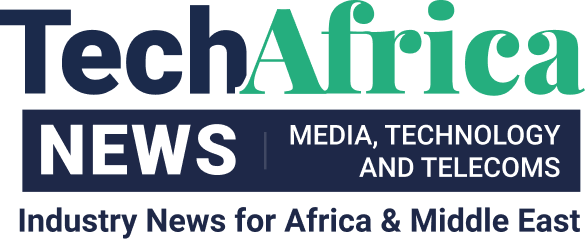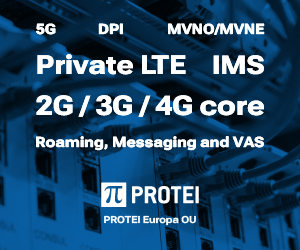Mazen Mroué, the Chief Technology and Information Officer, MTN Group talks about the importance of leveraging satellite partnerships to accelerate digital inclusion in Africa.
Basic internet access is the gateway to the digital world, creating opportunities to transform individuals’ lives, companies’ prospects and society’s sustainability.
In the telco industry, the major obstacles to ubiquitous broadband access are well understood: they range from gaps in coverage, to expensive handsets, to data unaffordability, to low levels of digital literacy.
In the past few years there has been notable progress to address these barriers to internet access for all. For example, the GSMA says the coverage gap in sub-Saharan Africa narrowed to 17% in 2022 from 50% in 2014.
This is no doubt encouraging, except if you are one of the 17% of people still without access. These people – mostly living in remote areas far from cities – must despair and feel that they really are being left behind. We owe it to them to do better. It is incumbent on us all to come up with a solution, and to do so quickly.
No time to lose
At MTN, we are inspired by our belief that everyone deserves the benefits of a modern connected life. We are driven to deliver on our Ambition 2025 strategic intent of ‘Leading digital solutions for Africa’s progress’.
Time is of the essence, so we recognise that we cannot do it alone. Partnerships are essential. In recent years we have helped narrow coverage gaps in rural areas by collaborating with several rollout partners and by deploying new technology using OpenRAN.
To complement our terrestrial network – where the terrain can be difficult for radio sites and backhaul transport and sparse population distribution often makes regular cellular rollout uneconomical – we are now exploring the skies. Specifically, we are partnering for low earth orbit (LEO) satellite connectivity to connect the unconnected, extend mobile connectivity to more rural and remote areas and improve resilience.
Mazen Mroué, Chief Technology and Information Officer, MTN Group
In this way, we are working to achieve our goal of 95% broadband population coverage across our footprint by 2025, from 88% in 2022. And in the longer term, we are determined to achieve universal access.
LEO satellites typically orbit the Earth at altitudes of between 160 and 2 000 km, making for shorter orbital periods (of between 90 minutes and a few hours) which is good for applications that need rapid data communication or frequent re-visits of specific areas.
The lower altitude contributes to lower signal travel times, resulting in lower latency. This is crucial for real-time communication, video conferencing and online gaming. And the sharp fall in the cost of launching 1kg of payload into space (from US$85 000 in the 1980s to around US$1 000 now) has added to the attractiveness of using LEO satellites.
Distinct yet complementary solutions
Central to our approach are two distinct yet complementary LEO-based solutions. The first employs direct-to-cellular technology to augment network access in traditionally under-served regions. Importantly, this technology is device-agnostic, ensuring compatibility with existing mobile units and requiring no special modifications.
The second solution uses LEO satellites to provide critical fixed connectivity for enterprise customers and efficient backhaul connectivity for MTN cellular sites. This is particularly relevant in remote and rural locations, where it offers a more affordable and efficient alternative.
In advancing this work, multiple initiatives are underway, including upcoming direct-to-cell trials with Lynk Global in South Africa and Ghana. Discussions are also taking place with providers like AST SpaceMobile for trials in Nigeria and South Sudan. Concurrently, there are ongoing engagements with SpaceX’s Starlink, with enterprise-grade trials underway in Rwanda and Nigeria. In parallel, we are advancing discussions with Eutelsat OneWeb for a planned pilot in South Africa.
While the typical financing model would be a revenue-sharing one (where the customer is MTN’s and the satellite infrastructure belongs to the LEO satellite vendor), our agreements with various vendors are negotiated on a case-by-case basis.
We have also approached each partnership with a profound sense of purpose. Each collaboration, each pilot, and each successful trial and commercial deployment represents a deliberate step toward narrowing the digital divide, enriching lives, and empowering the communities we serve.
Tapping into the transformative power of satellites
The transformative potential of this satellite approach has been demonstrated in MTN’s recent ‘proof of concept’ trial with Lynk Global in the remote village of Gowehn, Liberia. During the demonstration, about 25km from the nearest mobile coverage, a standard mobile phone was able to connect directly to Lynk Global’s satellite mobile base station in orbit.
Using MTN’s spectrum and Lynk’s network, the device successfully received a cell broadcast message and illustrated the capacity to send and receive text messages. The text was an initial use case; we have plans to carry out proof-of-concept trials for voice and data in some key markets.
We are also collaborating with Omnispace to explore the use of S-band for satellite services to expand MTN’s portfolio of wireless service in both MTN and Omnispace’s markets. This initiative underscores both companies’ commitment to develop cost-effective global connectivity solutions beyond existing cellular land-based networks.
The companies will explore combining MTN’s terrestrial mobile networks with Omnispace’s non-terrestrial network, leveraging 3GPP standards to service consumer mobile and enterprise IoT services. We will also consider opportunities to work together in developing and growing an ecosystem of devices and software.
As excited as we are by the LEO opportunity, it is important to note that most LEO satellite providers will be offering 4G as the mainstream technology, which means that we need to continue our work to get affordable 4G devices to customers.
By exploring new ways to connect the unconnected using innovative yet accessible technology, we are paving the way for an ‘always-on’ future where a modern connected life is accessible to everyone.











